Colt was on top of the world with the Single Action Army revolver and took aim at the lever action rifle market. Its entry? The Burgess rifle, released in 1883.
The Burgess failed to find traction and was never a challenge to Winchester’s legendary Model 1873, the rifle that was the “gun that won the west” yin to the Colt Single Action Army’s yang. Colt discontinued the Burgess after 16 months and after a mere 6,403 were made. Winchester was selling about 15,000 Model 1873s per year.
Then, lightning struck for Colt.
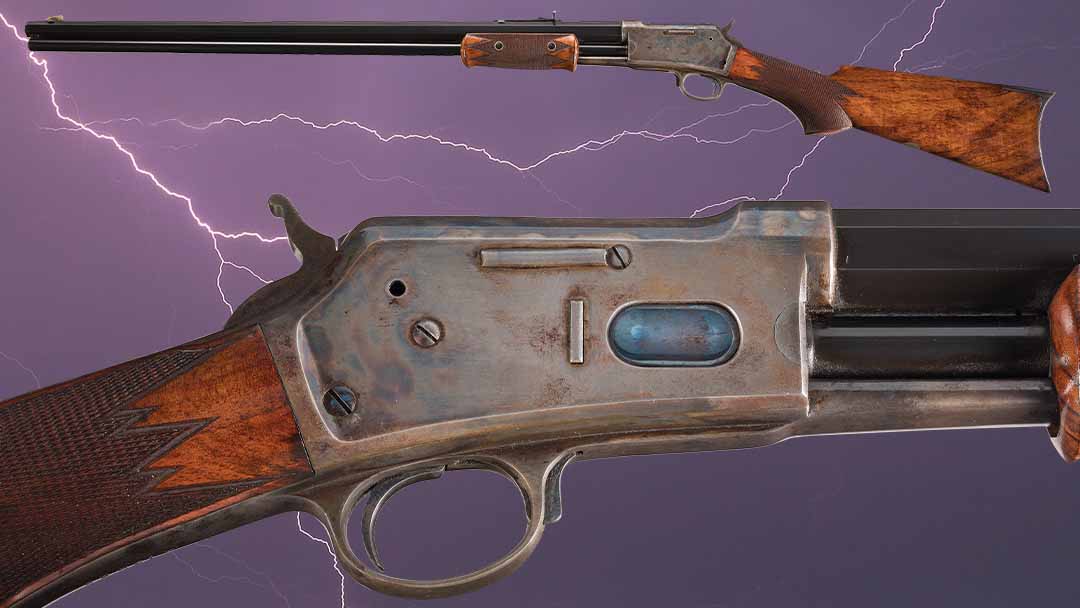
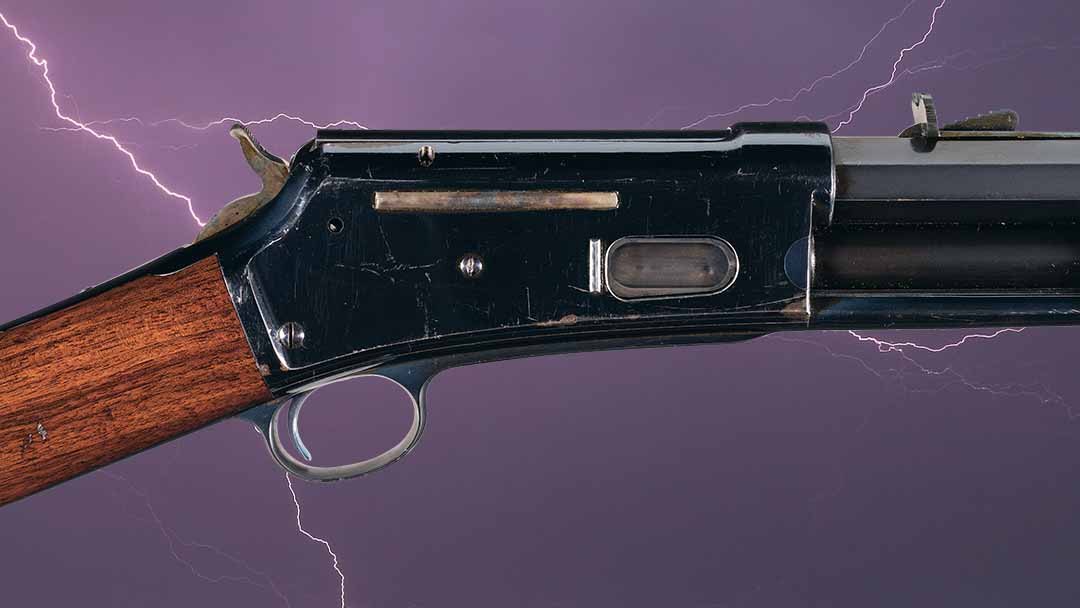
The company introduced the New Lightning Magazine rifle in 1884 that used a pump action to cycle rounds. The company made more than 185,000 Lightning rifles between 1884 and 1904.
The Colt Lightning, like the carbine gifted for Christmas to Carrie Adell Strahorn, Queen of the Pioneers, was produced in three models and offered in a number of calibers. Rock Island Auction Company has six of the Colt Lightning rifles on offer in its May 13-15 Premier Auction. Three are medium frame models and three are large frame models that are chambered in heavier calibers.

Gentleman’s Agreement Between Colt and Winchester
Legend has it that after the Burgess was introduced, Winchester officials approached their opposites at Colt about making a revolver and competing in that arena, offering up samples of what their pistols would be like. That led to a gentleman’s agreement between the companies that they wouldn’t intrude on each other’s market.
That didn’t stop Colt from buying the patent for a pump action rifle from a dentist who dabbled as an inventor. Dr. William H. Elliot’s design had a sliding forend that replaced the conventional lever used with the Burgess and Winchester rifles.
Elliot wasn’t someone who caught lightning in a bottle with his pump action design. He earned more than 130 firearms patents in the second half of the 19th century. His most successful design was a Remington double-barrel pocket pistol. Manufactured between 1866 and 1935, more than 150,000 of the over-under guns were produced.
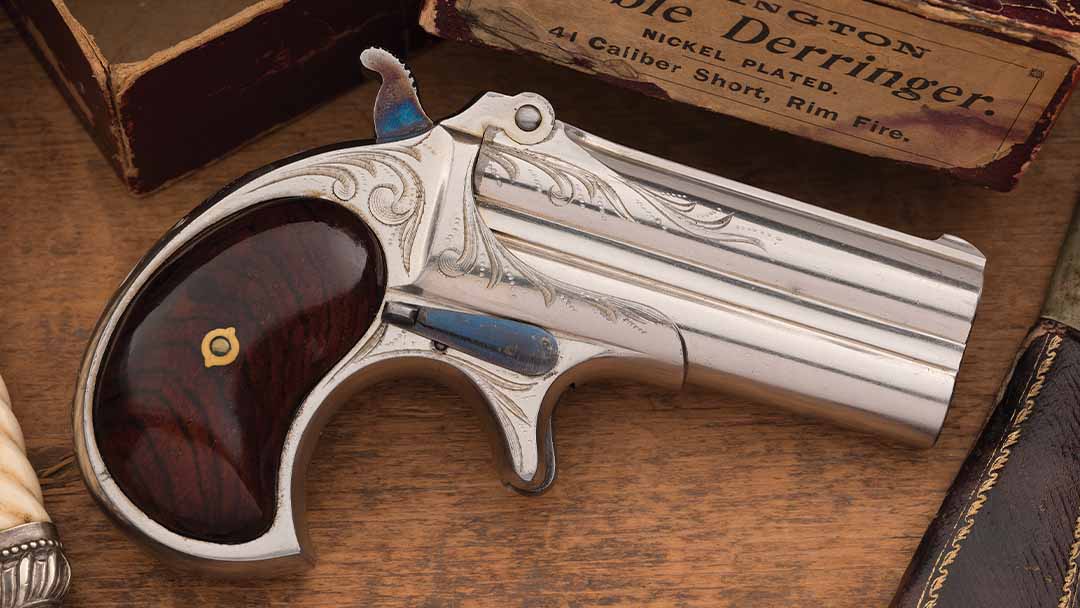
An engraved model of the double derringer, as it was called, and its factory original box is on offer in Rock Island Auction Company’s May Premier Auction.
Colt Lightning, Part I
A warning here — don’t confuse the Lightning rifle with the original Colt “Lightning.” The Colt Model 1877 double action revolver in .38 caliber was unofficially called “Lightning,” first. The M1877, Colt’s first double action revolver, was given nicknames of “Lightning” for .38 cal versions and “Thunderer” for the .41 caliber model by Benjamin Kittredge, one of Colt’s major distributors. An early .32 caliber model wore the moniker, “Rainmaker” as well. Two Colt Lightning revolvers are also on offer in the May Premier Auction.
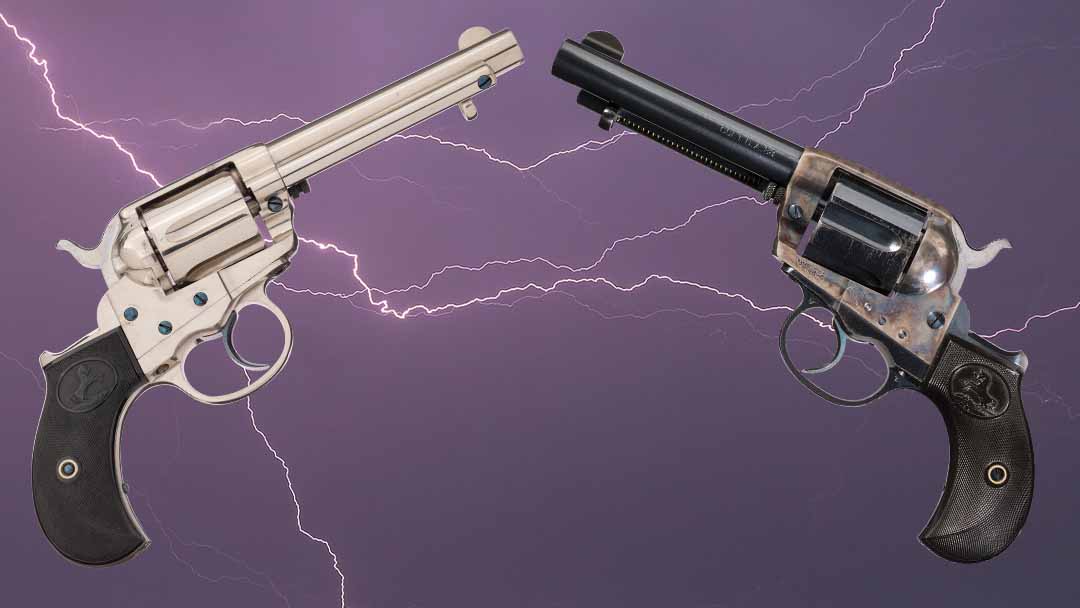
Kittredge, who came up with at least nine Colt Model trade names. also gave Colt’s first large frame double action revolver, the Model 1878, a nickname, too, calling it the “Omnipotent.
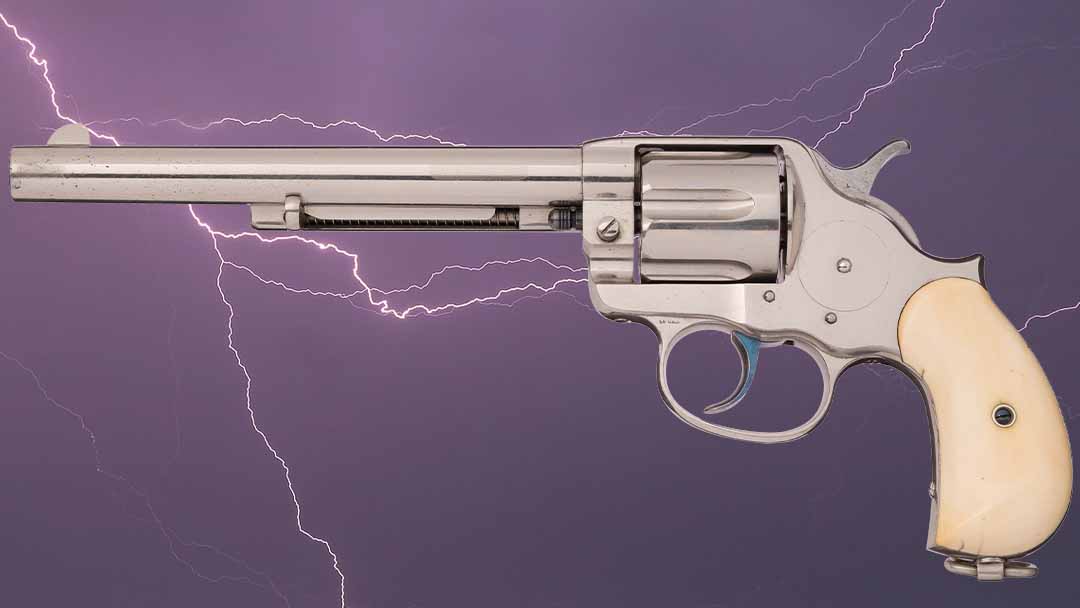
Pump Action Rifle
Colt engineers honed Elliot’s design before the Lightning – the rifle – was released it in 1884. The gun was described as reliable, easy to use, and extremely fast. Holding the trigger and using the pump allows the rifle to be fired very quickly – or slam fired, according to a Colt advertisement of the time. The Winchester 1897 might be more famous for slamfiring in the trenches of the Great War, but the Colt Lightning did it first.
The rifle was also light, weighing about 6.5 lbs. Over the three versions, they were offered in a deep-blued finish with a case-hardened hammer, a walnut stock, and forend and open rear and front sights. One of the medium frame Lightning rifles on offer features a rare case-hardened finish.
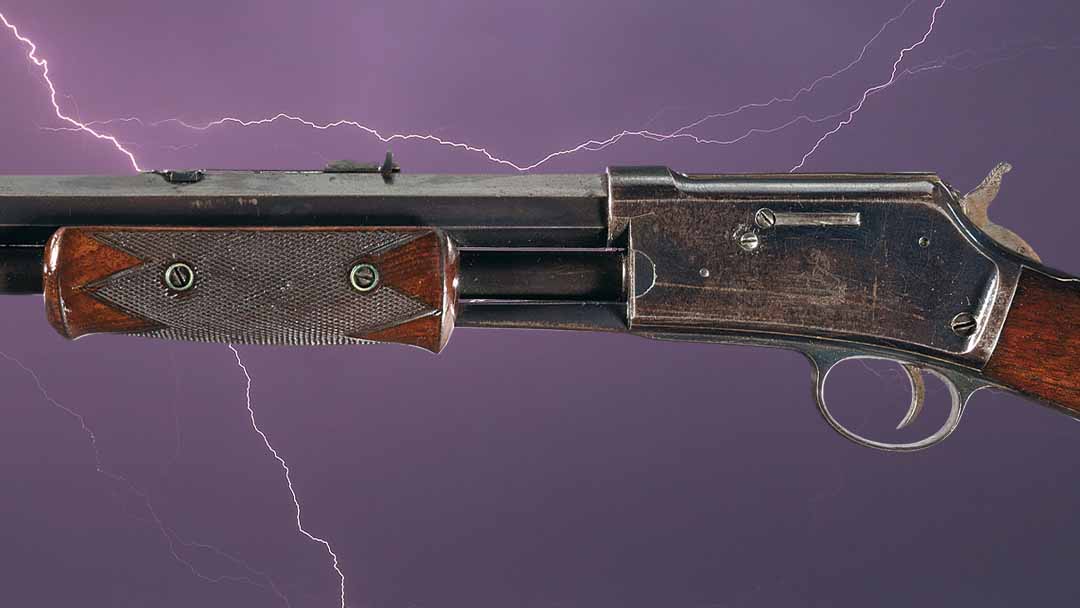
The Lightning was introduced with a number of calibers, including the .44-40, the same as the Colt Single Action Army’s frontier model. This model, considered the medium frame Lightning, was also chambered in .32-20, and .38-40, with a 15-round tube magazine. Colt made 89,777 medium frame rifles.
Three years later, the small frame and the large frame Lightning rifles were introduced.
Carnival Gun
The small frame Lightning, chambered in .22 rimfire, gained popularity as a carnival gun and with backyard marksmen. It was the most popular model, with 89,912 manufactured. The rifle was offered in a 24-inch barrel with a tube magazine holding 15 rounds – 16 if it was loaded with short ammunition. Many of the small frame rifles had rubber butt plates while the rest had iron.
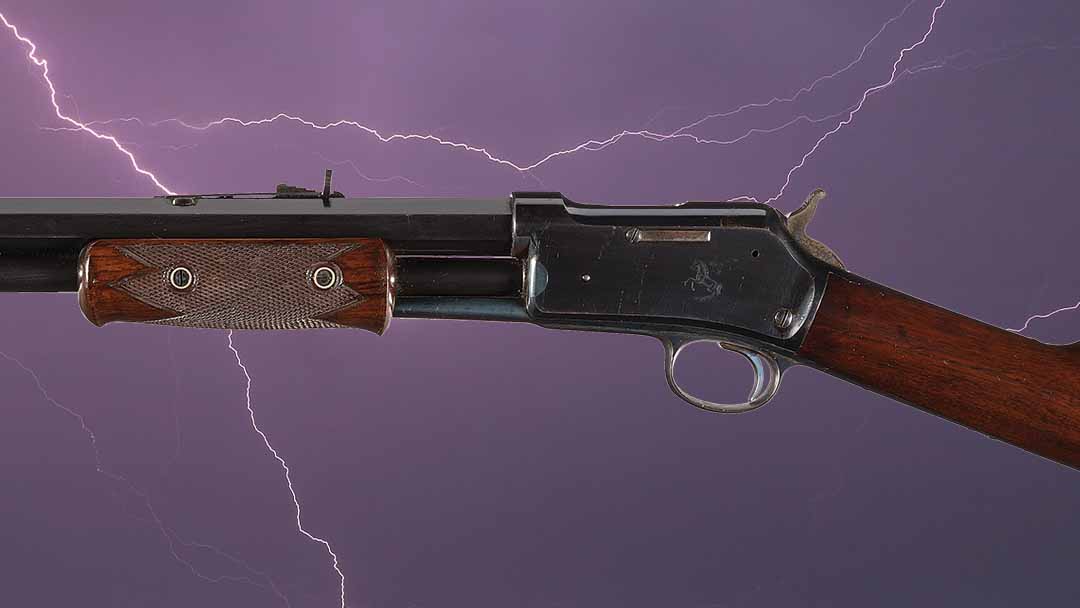
Big Game Gun
The large frame Lightning, known as the Express because it could carry .50-95 Express ammunition, was made for big game hunting. A 28-inch barrel rifle and a 22-inch barrel carbine were produced. It was only made until 1894 and is the scarcest of the three models with just 6,496 manufactured. It was also chambered in .38-56, .40-60, .45-60, and .45-85 as well.
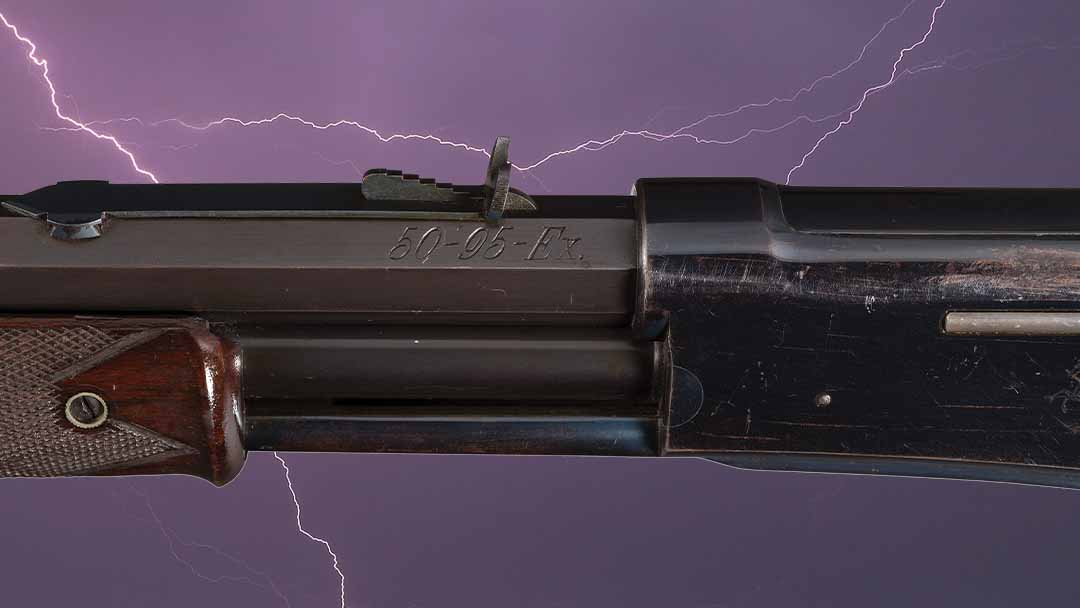
Police Gun
The medium frame was popular with law enforcement for its firepower. The Colt Lightning most sought-after by collectors is the 401 medium frame rifles sold to the San Francisco Police Department in 1898 that carried a special number series and are stamped “SFP.”
Colt Lightning Ends
Colt discontinued the Lightning after making more than 186,000 of the rifles to focus manufacturing capacity on its pistol lines, according to author James E. Serven, who wrote a history of the company.
Since it was often overshadowed by Winchester’s ubiquitous rifle the Colt Lightning doesn’t get much screen time. It did find its way into the spaghetti western “For a Few Dollars More,” wielded by the deadly Col. Douglas Mortimer, played by Lee Van Cleef, and a few others.
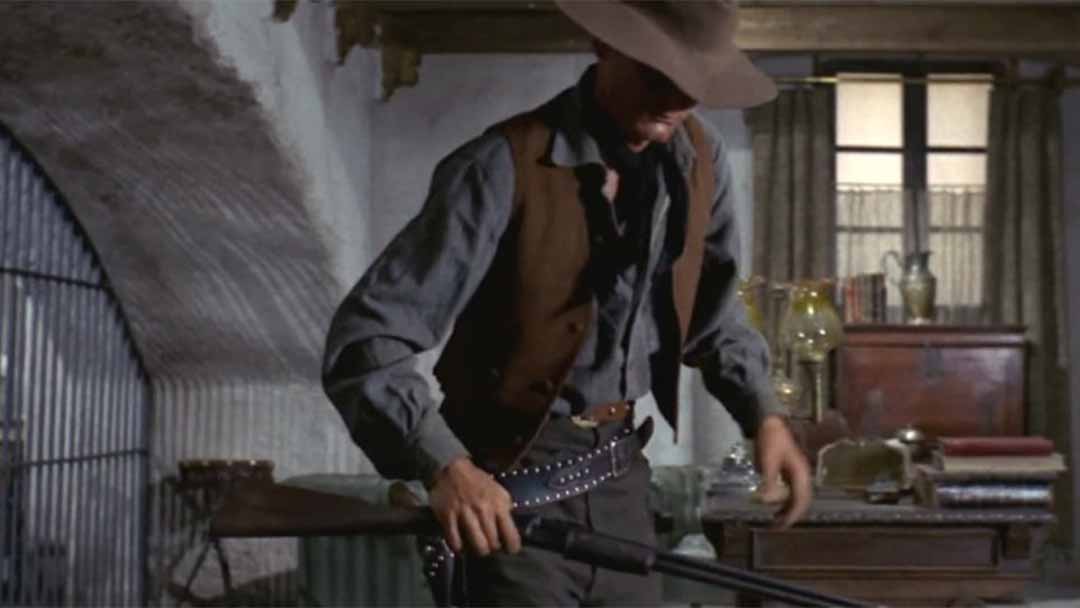
Gentleman’s Agreement, Slight Return
Returning to the apocryphal agreement between Colt and Winchester, more basic economics might have been at play with discontinuing the Burgess and pursuing the Lightning, according to Samuel L. Maxwell Sr., who wrote a book about the Colt Burgess rifle.
Burgess rifles, introduced in 1883, were priced at $24 for a 20-inch carbine model and $27 for a rifle with a 25.5 inch octagon barrel and had some shortcomings, including a lack of a dust cover over the action that came standard on the Winchester 1873.
A Winchester 1873 was priced less expensively and could be had for about $20 in the 1880s, but the company had been dropping prices to fend off competition. Colt on the other hand was financially well-positioned with the success of the Single Action Army, released in 1873, and its double action revolvers.
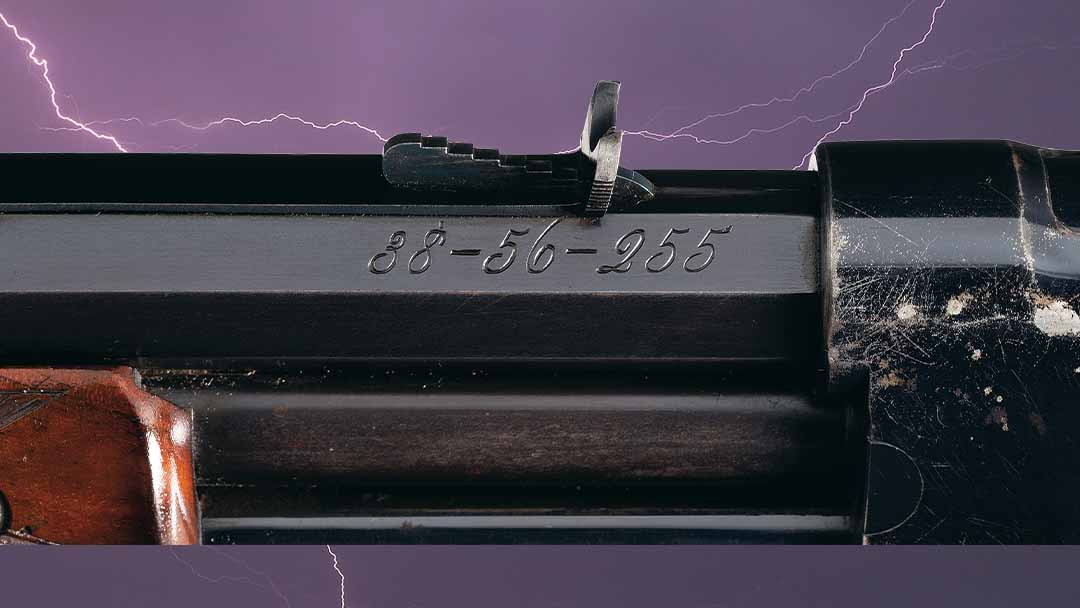
Colt priced the Lightning at $20.50 to $19 depending on the barrel length and whether they were round or octagonal barrels, according to Colt advertisements at the time. The success of the Lightning left Colt with little reason to continue with the Burgess lever action rifle. Production ended in 1884
Maxwell posits that Winchester was struggling to stay profitable while already competing with Marlin and Whitney. Trying to break into the pistol market, Winchester would face stiff competition from not only the venerable Colt brand but the already established Smith & Wesson and Remington, too. Meanwhile, Colt didn’t price the Burgess rifle competitively against Winchester so it didn’t have a problem discontinuing the model.
That left the companies at an impasse and back to doing what they do best, Maxwell argued, Colt making pistols and Winchester producing rifles.
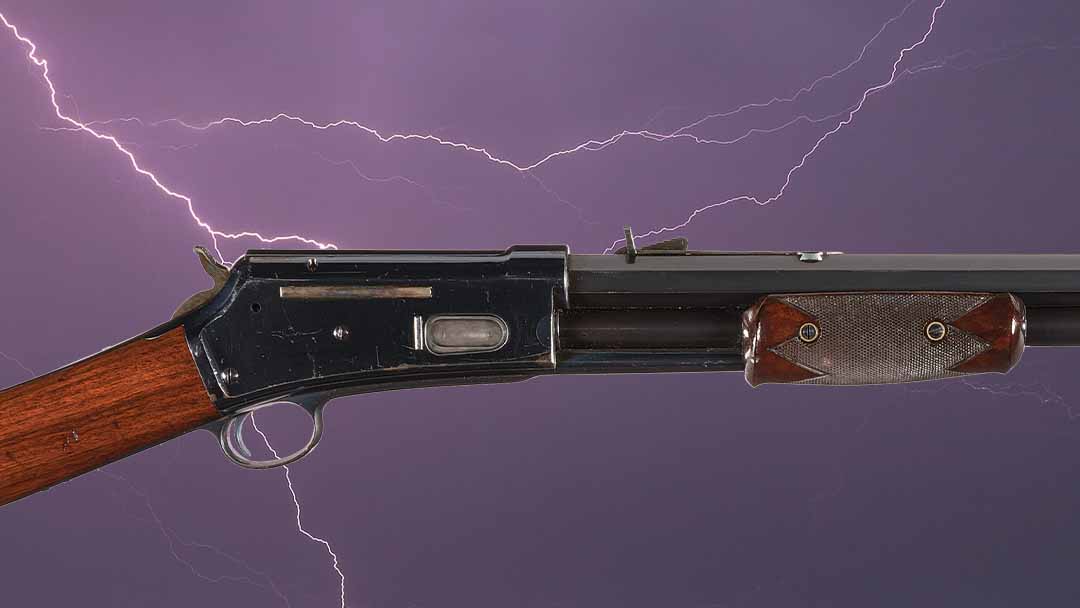
Colt Lightning Rifles
Despite its short history, manufactured from 1884 to 1904, the reliable and fast pump-action Colt Lightning proved to be a respectable challenger to the lever action rifles of the time. When the Lightning was discontinued, Colt had turned to developing a semi-automatic handgun. Six examples of the Colt Lightning rifle– three medium frame and three large frame — are on offer in Rock Island Auction Company’s May 13-15 Premier Auction.
Sources:
A Fist Full of Double Trouble, by Phil Sprangenberger, truewestmagazine.com
Colt Lightning Rifle, by Jon C. Branch, revivaler.com
Colt Firearms 1836-1959, by James E. Serven
Colt-Burgess Magazine Rifle, by Samuel L. Maxwell Sr.